Old batteries do not decorate the room? Making a screen for a heating radiator with your own hands
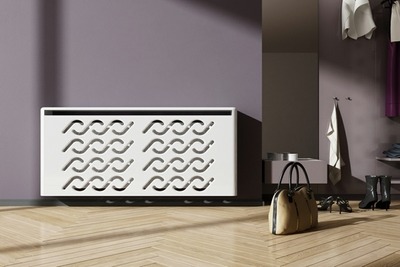
Heating radiators play an important role in the home, but their the appearance leaves much to be desired.
Therefore, it is natural to want to do something cover the battery. Play up its appearance in the interior of the room.
It is easier to do this using a screen, which you can create yourself.
Materials for screen manufacturing
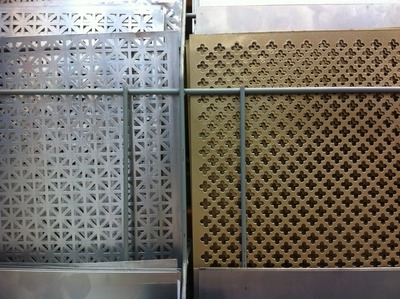
The screen for the radiator is made from almost any materialsThe market is in this regard wide choice. As a rule, the following are used to decorate a battery:
- metal;
- tree;
- plastic;
- plasterboard;
- MDF.
Metal
It conducts heat well, while being affordable. If you cover the radiator with such a screen, then heat loss will be no more than 3%. Thin sheet metal is best suited for manufacturing. For protection, the material is covered with a polymer film on top, which plays a decorative role. There are on sale different colors This coating is available in both plain and patterned colors.
The disadvantage of metal is that it's not that easy to work with himThe master is required to have welding skills and special tools.
Tree
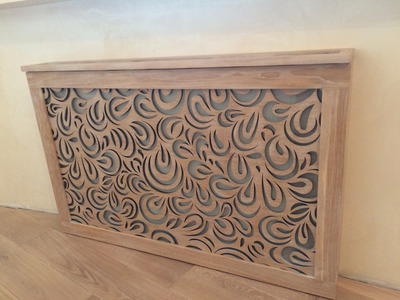
Wooden radiator panels are more common due to the fact that wood is easy to use material, and natural beauty will play a decorative role. Panels made of valuable wood species decorate the interior and give it a rich look.
For manufacturing choose well dried wood. Finished product impregnated with special compounds to avoid deformation and cracks.
The disadvantage of wooden screens is that they require constant care. In addition, the cost of natural wood is quite high.
Plastic
The most budget option for making a screen on a radiator. But the advantages of this material are limited by availability. Plastic can be deformed from high temperatures. This material poor conductor of heat, and when heated, it may release an unpleasant odor and harmful substances that are hazardous to health.
MDF
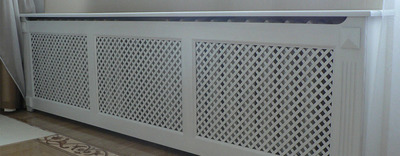
The most common The material for making screens on the battery is MDF. It is not as expensive and capricious in maintenance as natural wood.
The price is affordable and it is easy to work with. even without special tools.
Drywall
Before use must be carefully prepared. Without special preparation, the plasterboard will dry out and begin to crumble and crack. In addition, this material has low thermal conductivity.
Installation method
Screens on radiators are installed depending on the type of batteries, as well as the location where they are installed. By installation type distinguish between:
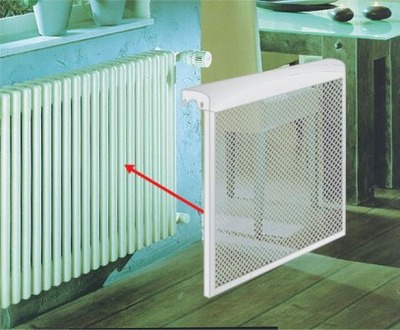
- flat panel;
- screen with a hinged part;
- box.
Flat panels are a great option for decorating a radiator installed in a niche. If space and room design allow, you can make a movable flat panel on legs that will cover the radiator like a screen.
Hanging the screen is installed on radiators that protrude forward. Such products have only two sides: the top and the front. In this case, the radiator is not covered by anything on the side.
Boxes are installed on batteries that also protrude forward. The difference from the previous model is that in this case the battery is also covered from the side. The advantage of the box is that it can play not only a decorative role, but also be used as an additional surface.
Tools
To make a screen for a radiator with your own hands, you will need various tools, depending on the material chosen, as well as the type of product itself. But in any case, you will definitely need:
- drill with drills of different diameters;
- countersink;
- circular saw;

- clamps;
- hacksaws on wood or metal;
- scrap for holding clamps;
- construction stapler;
- welding machine (in the manufacture of a metal screen);
- plastic welding machine (when made of plastic);
- self-tapping screws;
- screwdriver or screwdrivers.
Installing a screen on a heating radiator with your own hands
The installation will worsen the heating properties of the radiator. To prevent this from happening, before installing the screen, secure it behind the radiator. reflector. The simplest reflector is foil. In this case, the heat rays will be redirected back into the room, which will increase the level of heat transfer.
Attention! If inner surface paint the products in black, then the structure will heat up more from the radiator and will itself give off heat into the room.
Design of the screen on the radiator is selected depending on the type of battery and the method of its installation. Before making a decorative element, think about how to dismantle it in case of an accident, repair, replacement or simple cleaning.
Lattice
The screen-lattice is the simplest of the similar products. It is flat panel, consisting from a frame with wooden slats. The slats are placed horizontally, vertically, diagonally, in the form of cells. The last option looks the most attractive.
Manufacturing begins with installation frame by battery size. Use only dried material so that it does not deform or dry out during operation.
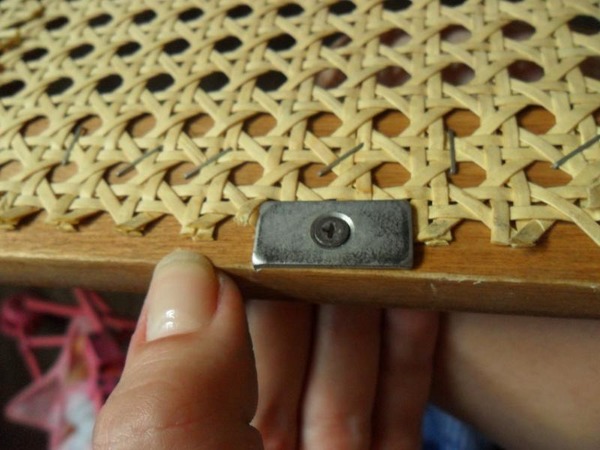
Photo 1. Demonstrates a method for securely attaching openwork lattice cells to a wooden frame.
Then onto the frame fasten the required number of slats the chosen method. The parts are carefully checked before installation. polish and strengthen special compounds. The slats are attached to the frame using glue or self-tapping screws. The finished product covered with varnish or paint.
Box
For making a screen box take measurements from the radiator. The dimensions of the product will be in width 10 cm more, and by height by 3-5 cm. First of all, it is manufactured facade part. It is made in the form of a lattice panel or the necessary holes are cut out on a solid plate.
Important! You can't cover the radiator with a screen by more than 50%.
Then they are made top and sides according to the dimensions. They can be lattice or solid. Parts are connecting among themselves metal corners. For screen stability Legs are attached at the bottom.
Common mistakes
Making a screen yourself, even from simple materials, requires careful preparation. An incorrectly made product disrupts battery performance, will lead to heat loss.
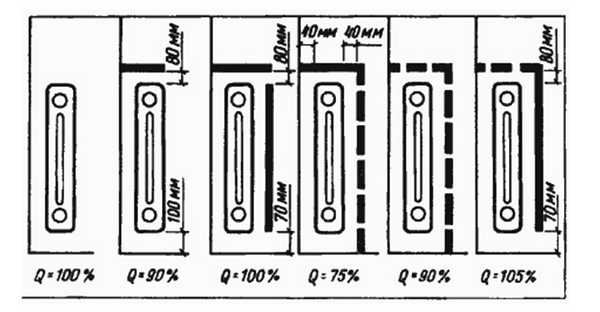
Photo 2. Diagram showing the change in heat transfer with different methods of radiator shielding.
A common mistake is insufficient number of openings in the front part products. This causes air to accumulate above the radiator and natural convection is disrupted.
Useful video
Watch the video to see how to make your own decorative radiator screen.
And in conclusion
A correctly manufactured and installed screen serves not only as a decorative detail, but also acts as a radiator itself. This applies to metal products. Some screen boxes serve as additional surfaces.
Important! Often performance radiator covered by a screen, is getting worse.
If metal strips are attached to the front part of the product, it is used as a clothes dryer. Of course, in this case the heating of the room will decrease for some time.






